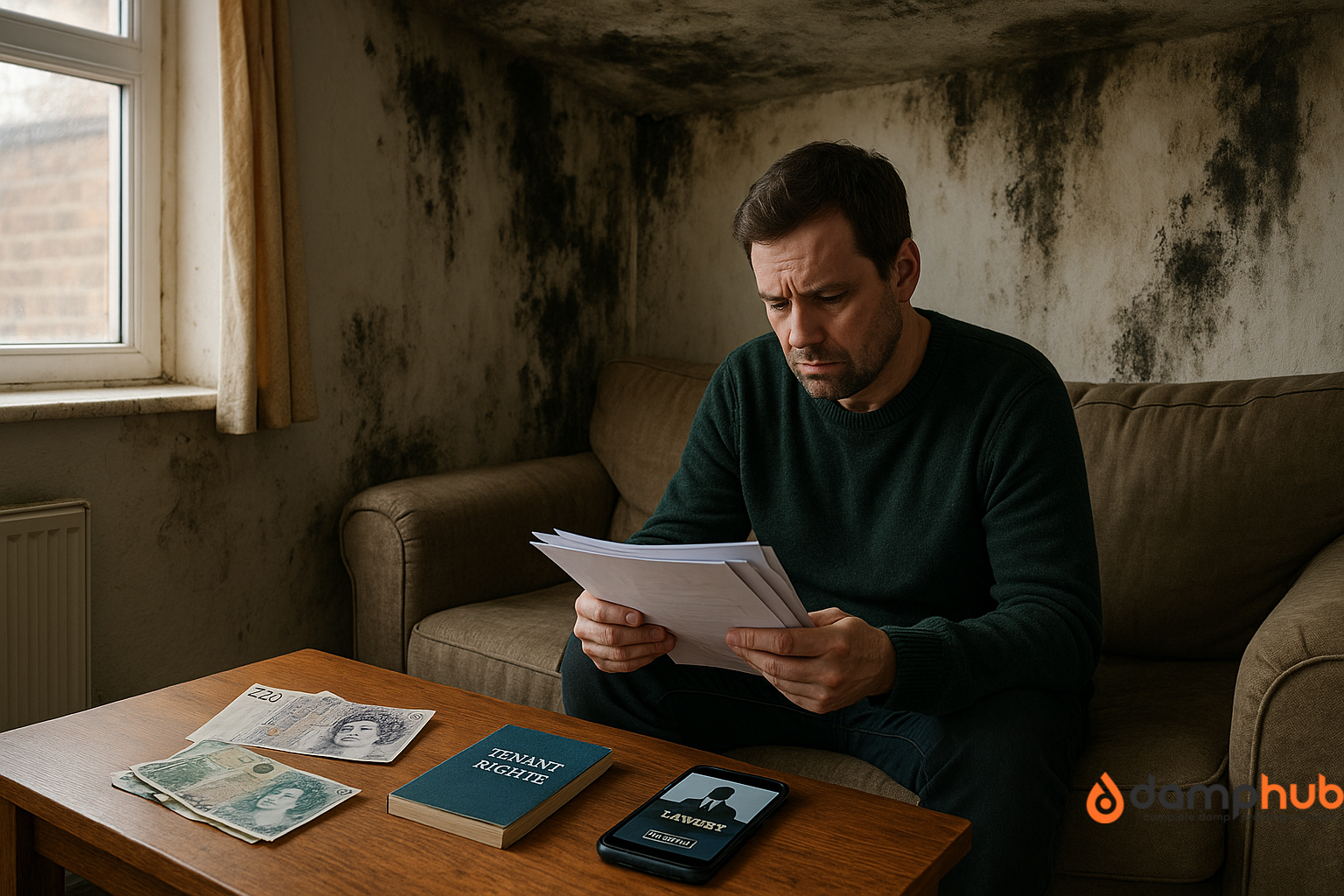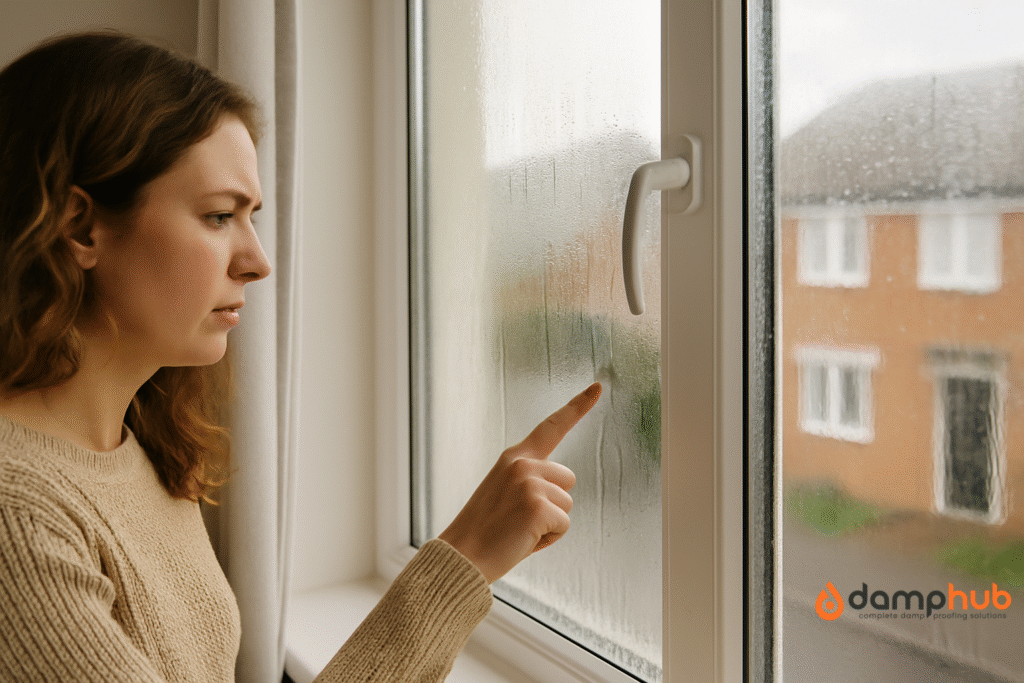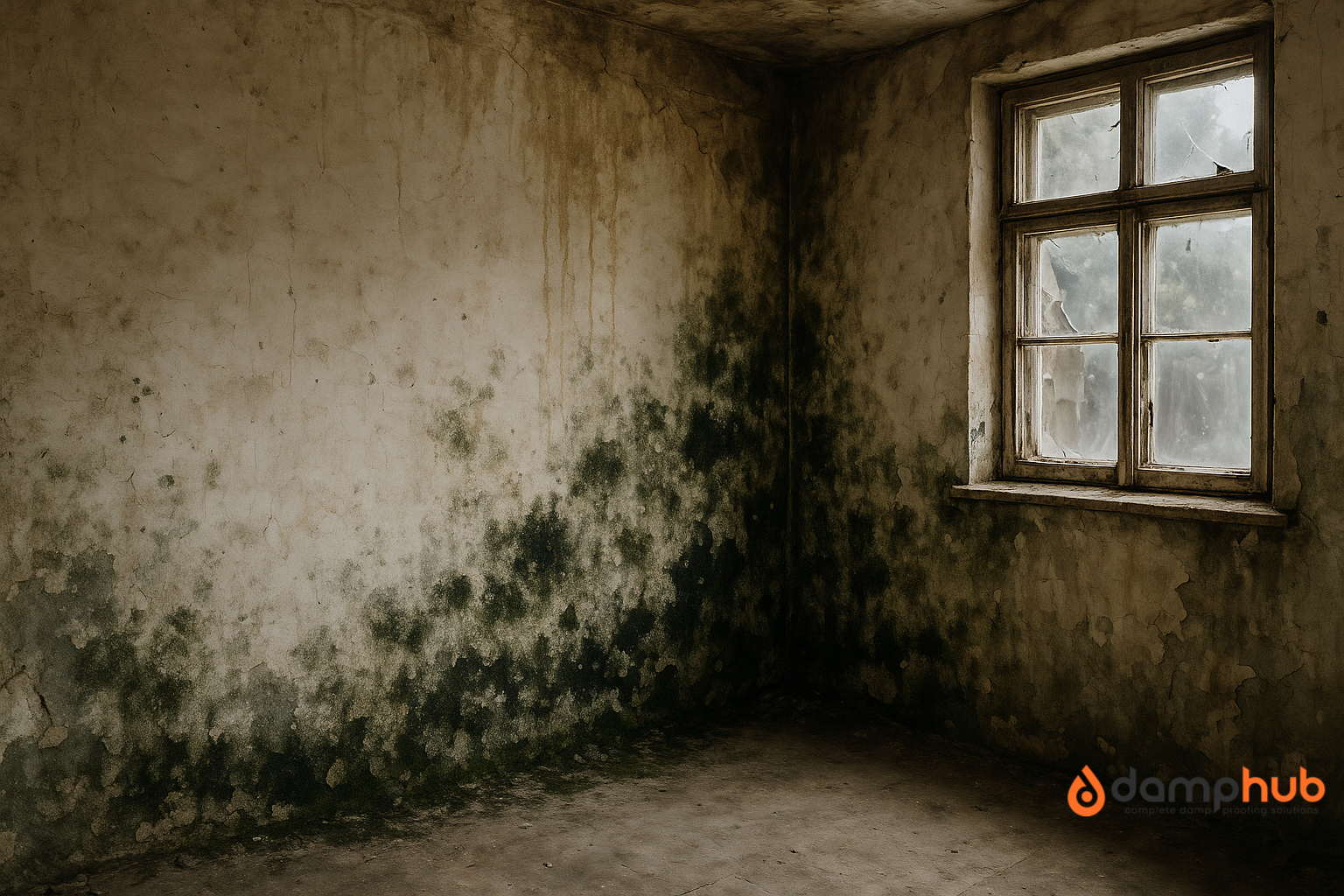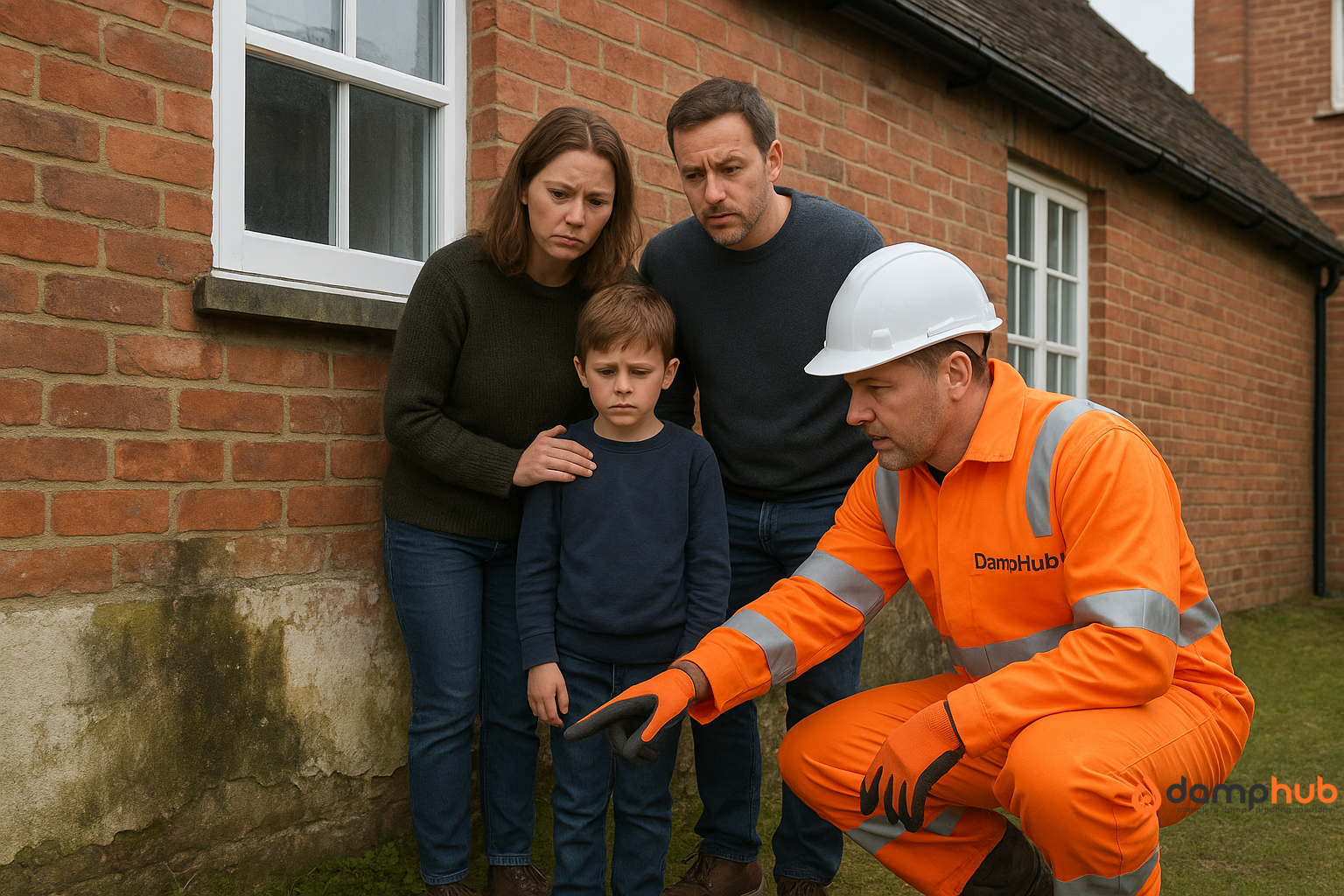
Imagine waking up to peeling paint, musty odours, and walls that always feel damp, no matter how many times you dry them.
That’s the sneaky reality of rising damp—a hidden menace creeping up your walls, slowly weakening your home’s structure and even inviting health risks like mould and mildew.
It’s not just about the ugly stains; it’s about what’s happening beneath the surface.
Could your home be at risk? Is rising damp dangerous enough to impact your health or your home’s safety?
Let’s find out:
- What is rising damp
- Why is rising damp dangerous
- Danger of rising damp, and
- Answers to some hot questions people ask regarding rising damp.
What Is Rising Damp
Rising damp is a type of moisture problem that occurs when water from the ground travels upward through porous building materials like bricks or mortar.
This happens due to capillary action, where moisture moves through tiny spaces in the wall structure.
Most modern buildings are protected by a damp-proof course (DPC), a barrier installed near the base of the wall. However, if the DPC is missing, damaged, or has deteriorated over time, rising damp can occur.
Common signs include peeling paint, tide marks, salt deposits, and rotting skirting boards. If left untreated, it can cause structural damage and health issues.
Is Rising Damp Dangerous to Your Home?
Rising damp isn’t just a minor inconvenience—it can cause serious damage to your home over time.
Let’s look at some real-world examples of how it affects different parts of a house.
👉 Must read: What Is Damp and Mould Compensation?
1. Damage to Walls, Plaster, and Paint
Imagine you’ve just given your living room a fresh coat of paint, only to notice ugly bubbles and peeling sections a few months later.
This happened to Sarah, a homeowner in London, who kept repainting her walls, thinking it was just bad paint.
In reality, rising damp was creeping up from the ground, soaking into her plaster and breaking down the paint from the inside. The cycle of repainting never worked because the root problem—excess moisture—was never fixed.

2. Weakened Structural Integrity (Rotting Timber & Crumbling Masonry)
Tom, who inherited a 50-year-old cottage, discovered that the wooden floorboards in his hallway felt spongy and weak.
What seemed like minor wear and tear turned out to be rotting timber—a direct result of rising damp weakening the wooden beams.
The masonry near the base of the walls was also crumbling due to prolonged moisture exposure.
If left unchecked, this could have led to costly structural repairs.
👉 Related blog: What Does Rising Damp Look Like?

3. Increased Humidity Leading to More Moisture Problems
Lisa, a mother of two, started noticing a musty smell in her children’s bedroom.
She also found black mould growing behind furniture and along the skirting boards.
The culprit?
Rising damp had increased the overall humidity levels inside her home, making it the perfect breeding ground for mould and mildew.
This not only ruined furniture but also triggered allergies in her kids, forcing her to seek urgent professional help.
👉 More to read: How to Treat Rising Damp: A Complete Guide for UK Homeowners

Is Rising Damp Dangerous to Your Health? Real-Life Cases
We’ve seen how it harms your property, but is rising damp dangerous for your health too? Unfortunately, the answer is just as serious.
When moisture seeps into your walls, it creates the perfect breeding ground for mould and mildew, which release spores into the air.
For people like Sarah, a mother of two from London, this became a nightmare.
Her youngest son, already struggling with asthma, started experiencing more frequent attacks.
Doctors pointed to the mould growing in their home as a major trigger.
But it doesn’t stop there.
Dust mites and bacteria thrive in damp conditions, exacerbating allergies and respiratory issues.
Take John, a retired teacher, who started experiencing unexplained congestion and sinus infections after moving into an old house.
It turned out that rising damp had led to high humidity, which in turn encouraged dust mites—one of the most common indoor allergens.
For those already living with health conditions, like elderly individuals or those with weakened immune systems, the impact can be even more severe.
Rising damp doesn’t just affect your walls—it affects your quality of life.
If you’ve noticed persistent coughing, sneezing, or an increase in allergy symptoms, your home’s dampness could be silently working against you.
Ignoring the issue only leads to higher humidity levels, which then cause even more moisture-related problems, like condensation and rotting wood, creating a cycle that’s hard to break.
Whether you’re a parent, a homeowner, or just someone who values a healthy living space, tackling rising damp isn’t optional—it’s essential.
👉 Related Blog: How to Cure Rising Damp in an Old House

Here’s a chart that outlines the common problems caused by rising damp, organized by category and specific effects:
| Category | Specific Effects |
|---|---|
| Structural Damage | • Crumbling plaster • Weak mortar joints • Timber decay in floors/skirting • Salt contamination (nitrates, chlorides) |
| Health & Safety | • Mould growth (black mould, musty smell) • Breathing issues like asthma or allergies • Cold, damp indoor air |
| Aesthetic Damage | • Peeling paint or wallpaper • Wall stains and discolouration • Efflorescence (white salt deposits) |
| Energy Efficiency | • Insulation works less effectively • Damp air makes heating less efficient • Higher energy bills |
| Property Value | • Harder to sell or rent the home • May fail building surveys or inspections |

Final Thought. Is Rising Damp Dangerous?
So, is rising damp dangerous? Without early action, it is—threatening both your home and your well-being
The good news is that with prompt action and the right solutions, rising damp can be effectively managed.
If you notice any signs of dampness, don’t hesitate to get professional help.
Tackling the issue early will save you time, money, and stress in the long run.
FAQs
How do you cure rising damp?
To cure rising damp, you need to stop moisture from coming up through the walls or floor. This is usually done by:
– Installing a damp-proof course (DPC) — either a physical barrier or a chemical injection into the wall to block moisture.
– Replacing damaged plaster and letting the walls dry out.
– Fixing any issues outside the home, like blocked drains or ground levels too high against the wall.
How to tell the difference between rising damp and condensation?
– Rising damp usually shows up on lower walls (up to 1 metre), with signs like tide marks, salts, or crumbling plaster.
– Condensation appears on cold surfaces like windows and upper walls, often with mould in corners or behind furniture.
You can test by taping foil to the wall: if the inside of the foil is wet, it’s rising damp or penetrating damp. If the outside is wet, it’s condensation.
How can you tell if it’s rising damp?
Rising damp usually shows:
– Tide marks or water stains low on the wall
– White salts (efflorescence) on the surface
– Peeling paint, damp plaster, or rotting skirting boards
A surveyor may use a moisture meter to confirm how high the damp has risen.
How does rising damp start?
Rising damp starts when groundwater moves up through bricks or mortar. This happens when:
– There is no damp-proof course, or the DPC is damaged
– The outside ground level is higher than the DPC
– The wall materials soak up water like a sponge
Over time, moisture rises up the wall by capillary action, bringing salts with it.
How long does rising damp take to dry out?
On average, walls take 1 month per inch of thickness to dry, so a 9-inch wall may take around 9 months.
But drying can be faster with:
– Good ventilation
– Warm temperatures (around 20°C)
– Dehumidifiers or fans
If replastering is needed, it should be done only after the wall is fully dry.
How do you get rid of rising damp on a concrete floor?
To fix rising damp in a concrete floor, you need to:
– Install a damp-proof membrane (DPM) under or over the floor
– Sometimes, apply a liquid waterproof coating on the surface
– In serious cases, remove and re-lay the floor with a new DPM underneath
– It’s also important to check the walls nearby and make sure the whole area is sealed properly.






